SMITHSONIAN AMERICAN ART MUSEUM AND THE RENWICK GALLERY
Discoveries from the Collection: Honoring Service and Sacrifice in American Art
Discover how a partnership between SAAM and the American Battle Monuments Commission revealed an unexpected connection between Paul Manship sketches and a U.S. military cemetery located outside of Rome.
Discover how a SAAM partnership with the American Battle Monuments Commission revealed an unexpected connection between Paul Manship sketches and a U.S. military cemetery located outside of Rome
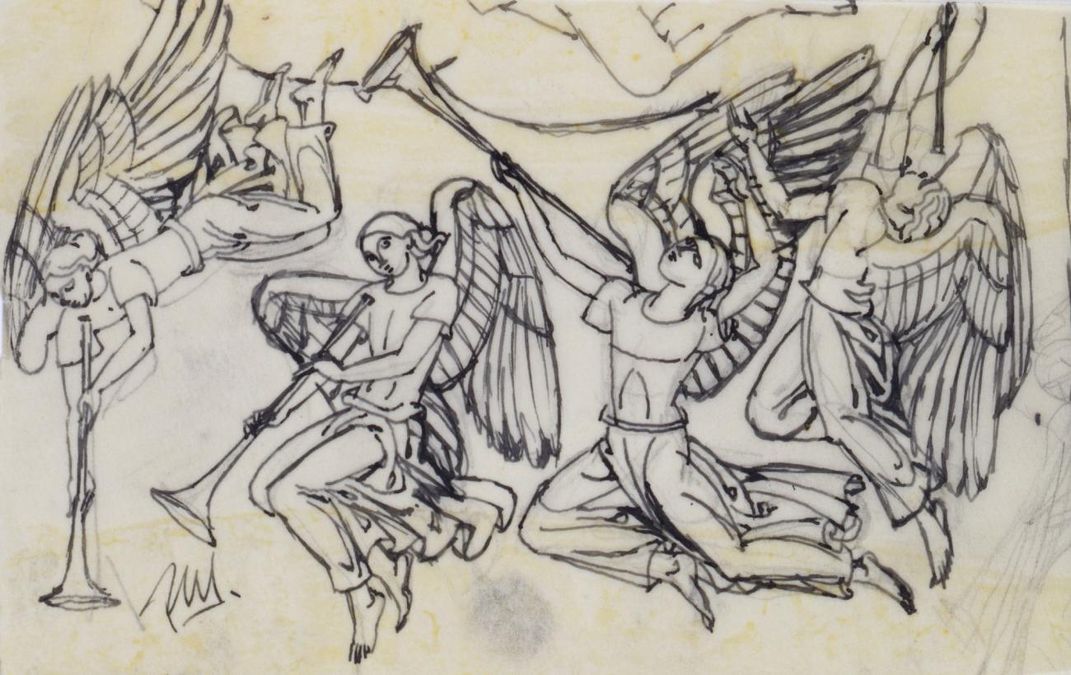
The Smithsonian American Art Museum's collection is one of the most significant and inclusive collections of American art in the world. With thousands of artworks by hundreds of artists, there is always an opportunity to dive deeper, discover more, and ask further questions about the artworks and artists that help shape our collective American story.
SAAM’s recent partnership with the American Battle Monuments Commission (ABMC) to develop a series of online education programs offers exactly this, an opportunity for exploration into the collection and to draw unexpected connections between two seemingly disparate topics: American art and U.S. military cemeteries.
ABMC is a federal agency dedicated to honoring the service and sacrifice of more than 200,000 U.S. service members buried and memorialized at its 26 cemeteries and 32 monuments and memorials in 17 countries, including the United States. Although the majority of its cemeteries and memorials are located overseas near the sites where prominent battles occurred during both world wars, ABMC recently dedicated its 32nd memorial, the National World War I Memorial, less than a mile from SAAM in Washington, DC. Much like works of art, these landmarks are designed with meticulous attention to detail and feature nuanced site plans that can convey deep symbolism. Artists are often commissioned to create statues, frescos, murals, and more that depict the honor, service, and sacrifice made by U.S. service members on these sacred grounds.
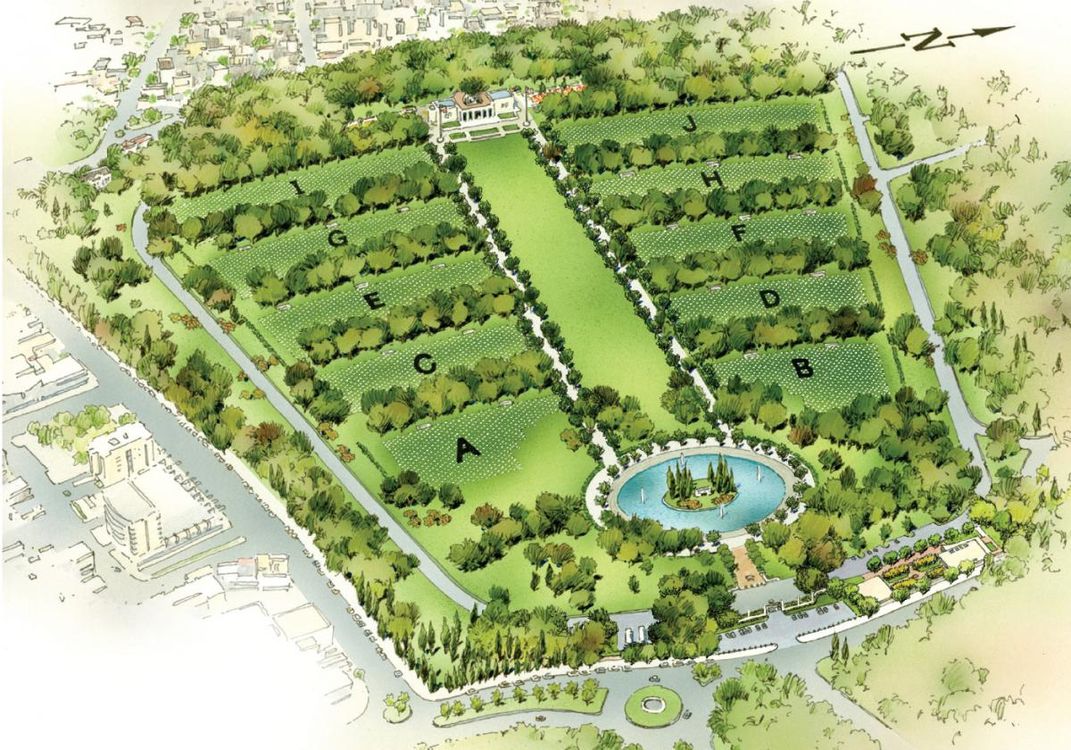
While developing the virtual programs, SAAM’s team of educators, in collaboration with ABMC’s historians, unearthed a series of process sketches by the famed sculptor Paul Manship. These sketches depict the early plans for the elaborate Seravezza white marble triptych, which serves as the centerpiece of the Sicily-Rome American Cemetery and Memorial in Italy. “It was exciting to make this serendipitous discovery in our collection, connecting the dots between the sketches and the final marble,” said Carol Wilson, SAAM’s Lunder Education Chair. “Now we know how Manship’s project was fully realized, and ABMC has some insight into the artist’s thinking as the project developed.”
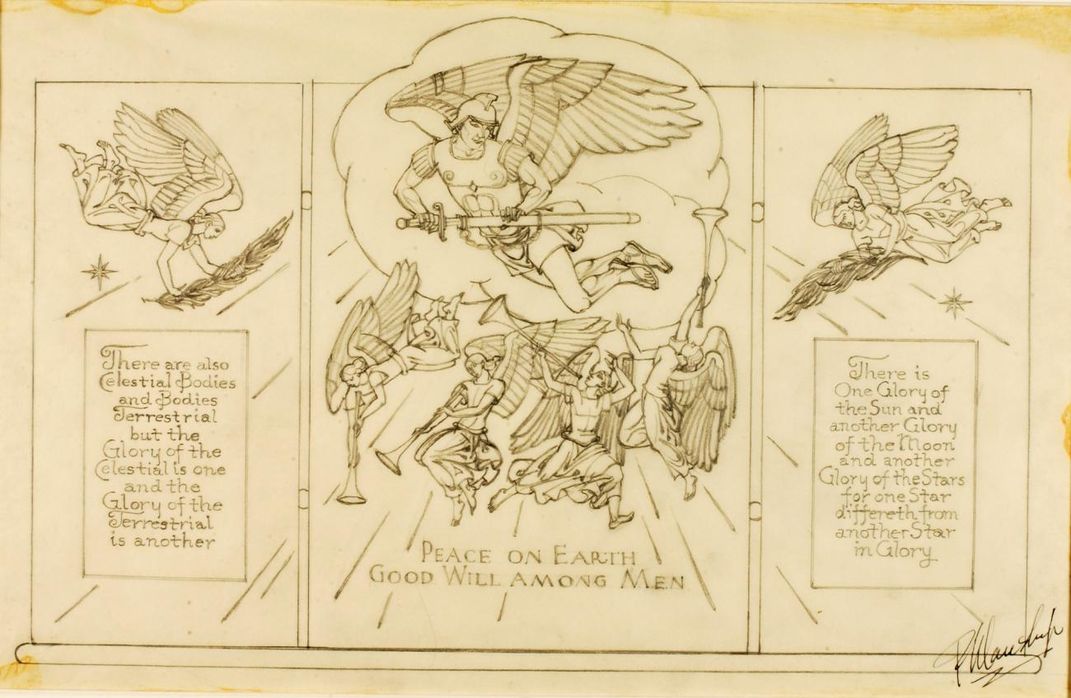
The Sicily-Rome American Cemetery and Memorial is located 38 miles south of Rome and commemorates the American service members fallen during WWII from the 1943 campaigns in Sicily to the liberation of Rome from Nazi-German occupation in 1944. The gentle rising slopes of this cemetery embody a sense of eternal tranquility. It is the resting place for more than 7,800 fallen, including more than a dozen women, who served primarily in the Army Nurses Corps and the Women’s Army Corps. A wide central mall leads to a memorial flanked by two marble reliefs also sculpted by Manship. Inside the memorial, the triptych rests on an altar surrounded by walls carved with the names of more than 3,000 service members listed as missing in action.
Manship’s triptych depicts angels holding palm branches, text from Psalm 8:3-5, and a translation of Greek poet Simonides’ work “The Greek Dead at Thermopylae.” This three-part sculpture features in the relief on the center panel the archangel Michael, flying against a background of clouds, sheathing his sword while four angels below him proclaim victory. Beneath them is the universal prayer: “Peace on earth goodwill among men.” As we can see from the preparatory sketches, Manship chose his imagery deliberately. The archangel Michael is seen as a warrior figure, representing the soldiers who fought in battle. The figure floats on a cloud that pierces the horizontal line of the top of the center panel, focusing the viewer’s attention upward towards heaven. The palm branches the angels hold symbolize victory but also serve to convey meaning for the loss of life: visualizing triumph means that soldiers did not die in vain. The trumpets blown by the angels at the bottom of the center panel herald the souls of the fallen to heaven, celebrating their sacrifice.
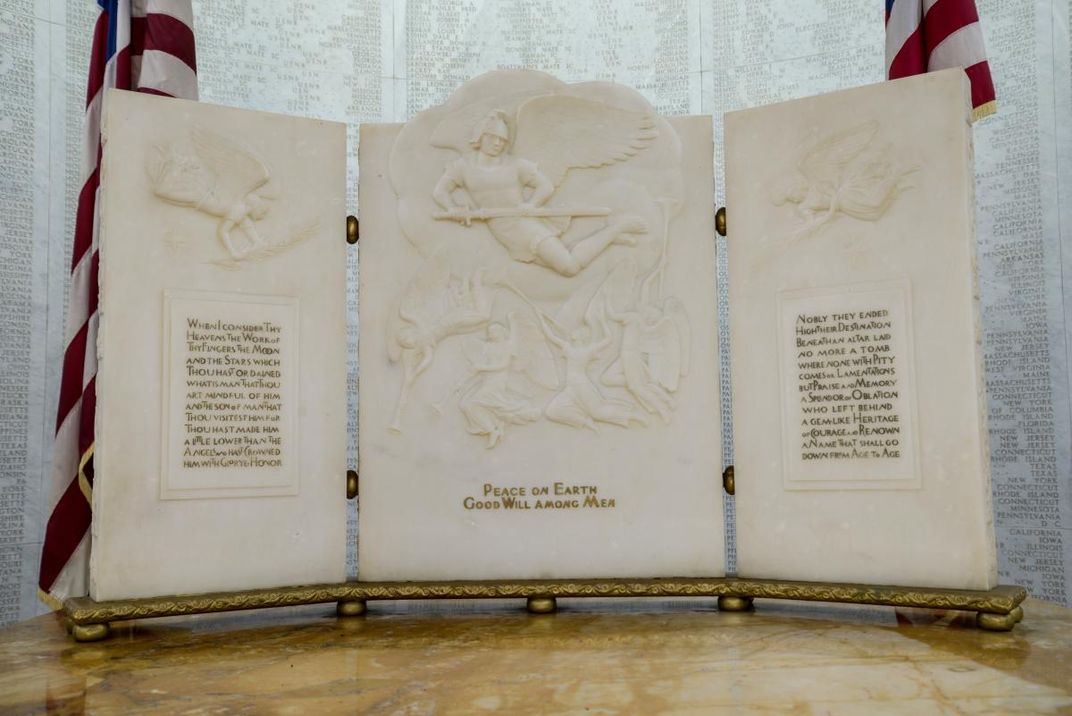
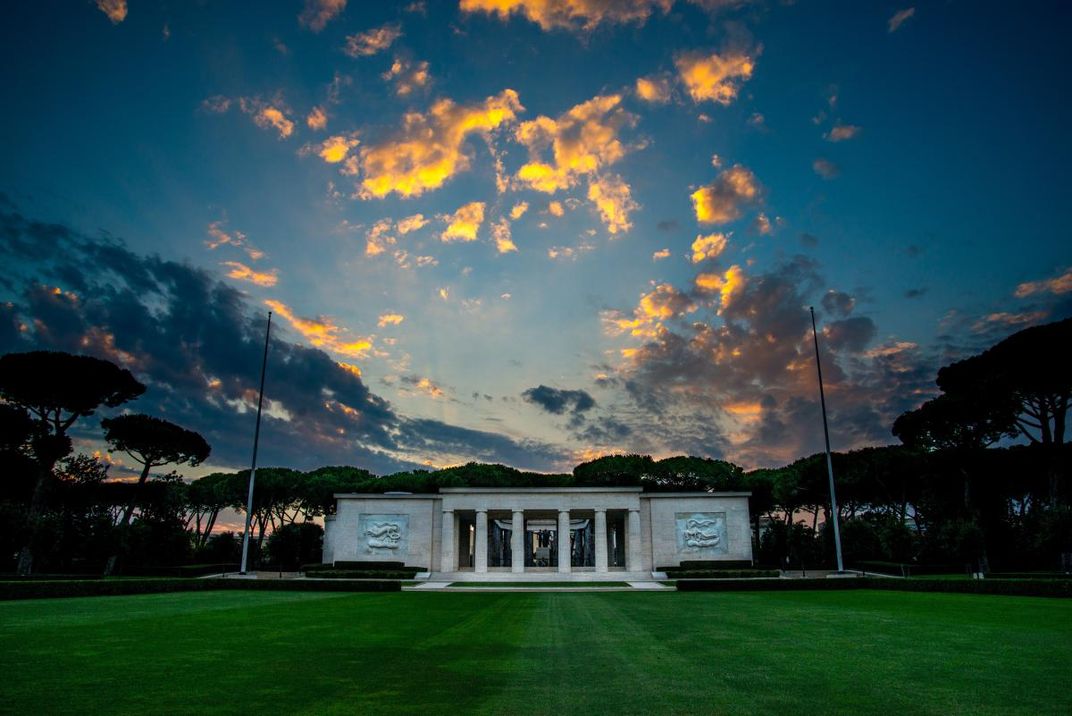
This is the first of two posts about this partnership. A pilot series of life-long learning programs with SAAM educators and ABMC historians debuts this month and is fully-subscribed. To learn more about SAAM’s education initiatives and resources, visit our website: AmericanArt.si.edu/education. Sign up for our email list and be the first to learn about new education programs at SAAM.
